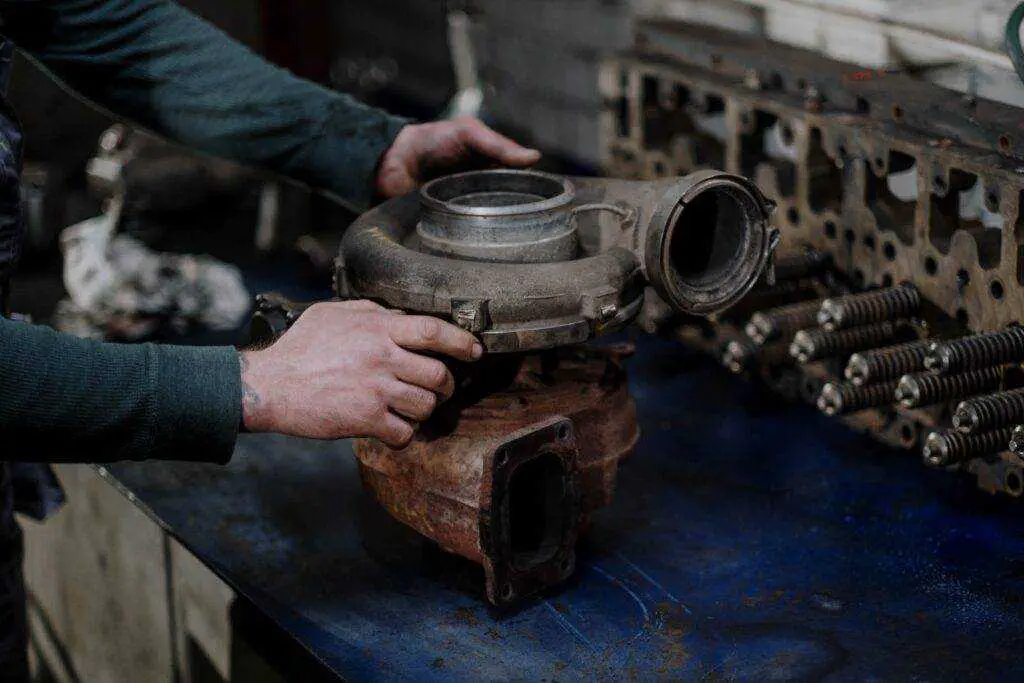You just had your oil changed, expecting your engine to run smoother and quieter. But now your engine is misfiring, stumbling and lacking power. What happened? How could a routine oil change cause the engine to misfire?
While an oil change seems unrelated to ignition issues, there are some possible connections. Let’s explore the potential causes, dive into diagnostics, and resolve this frustrating problem.
What is Engine Misfire?
Before jumping into oil change-related causes, let’s review what engine misfire is.
Why is My Car Misfiring After Oil Change? An engine misfire occurs when one or more cylinders fails to fire properly. This results in a loss of power, stumbling sensation, rough idle, and sometimes a flashing check engine light.
Several components must work in harmony to generate the combustion that powers your engine. When something disrupts this delicate dance, misfire happens.
Potential causes of engine misfire include:
- Faulty spark plugs
- Worn out ignition coils
- Failed fuel injectors
- Vacuum leaks
- Low fuel pressure
- Faulty crankshaft/camshaft sensors
Now let’s look at how an oil change could contribute to misfire issues.
How Oil Changes Can Cause Misfiring
While the oil change itself doesn’t directly cause the misfire, errors made during the oil change may lead to problems. Here are some ways an oil change could trigger engine misfire:
1. Low Oil Level
Adding insufficient oil is one of the most common oil change errors. Low oil levels can cause increased friction and premature engine wear. But it can also affect the variable valve timing system.
Many modern engines use variable valve timing to optimize performance and efficiency. This system relies on oil pressure to function properly.
With low oil, the variable valve timing system may not operate correctly. This can essentially “throw off” the engine’s timing, leading to misfires.
2. Using Wrong Oil Viscosity
Oil viscosity refers to the thickness of the oil. Using the improper viscosity oil can also impact variable valve timing operation.
Thicker oils may not flow into the VVT system quickly enough to activate the variable timing. This can delay valve timing, resulting in misfire.
Conversely, oils that are too thin may not provide the hydraulic pressure required for proper VVT function. Again, this leads to incorrect valve timing and engine misfire.
3. Dirty/Clogged Oil Filter
Replacing the oil filter is a critical step in an oil change. But if the new filter is not seated properly or the old filter gasket remains, it can become clogged.
A restricted oil filter reduces oil flow to vital components like VVT actuators and hydraulic lifters. Just like low oil levels, this loss of flow and pressure can impact valve timing and cause misfiring.
4. Loose Components
Many sensors and components are removed to access the oil filter during service. If something like the mass airflow sensor is disconnected and not properly reconnected, it can definitely cause ignition problems.
The mass airflow sensor reports intake air volume to the computer. If this signal is interrupted, the fuel mixture will be thrown off, potentially leading to misfire.
Other Causes of Misfire After Oil Change
While the oil change itself may lead to misfire in some cases, there are other causes to consider:
Faulty Spark Plugs
The most common cause of engine misfire is worn out or damaged spark plugs. If the change interval coincides with your car’s spark plug replacement interval, it could just be a coincidence.
Inspect spark plugs for excessive wear, carbon fouling, oil fouling, or damage that would prevent sparks. Replace any faulty spark plugs.
Failing Ignition Coils
The ignition coil transforms the battery’s 12 volts to the 20,000+ volts required to generate a spark. When coils begin to fail, they may have a harder time providing consistent, strong sparks to ignite the fuel mixture.
Coil failure is a gradual process, so weaker coils combined with increased engine load after an oil change could lead to misfire.
Clogged Fuel Injectors
The high pressure and temperature inside cylinders can bake fuel deposits onto injector tips over time. This affects the spray pattern, restricting fuel flow.
Like with ignition coils, clogged injectors are often on the verge of failure already. The added strain after an oil change may push them over the edge.
Vacuum Leaks
Any breach in the air intake system is considered a vacuum leak. This introduces extra, unmetered air into the cylinders. Too much air results in a lean fuel mixture that doesn’t burn efficiently, potentially causing misfire.
Vacuum leaks are most common at intake gaskets, hoses, and vacuum lines. Poking around during an oil change could accidentally create a new leak.
Diagnosing Oil Change Related Misfire
Determining if the oil change directly contributed to engine misfire takes some investigation:
1. Scan for Trouble Codes
Connect an OBD2 scanner tool and check for any stored diagnostic trouble codes (DTCs). Codes like P0300 (random misfire) and P030X (misfire specific cylinder) indicate a misfire.
But other codes may reveal low oil pressure, timing over-retarded, or air-fuel ratio imbalance—all signs that could link the misfire to the oil change.
2. Thorough Oil Change Inspection
If oil-related codes are present, thoroughly inspect the work just completed during the oil change:
- Check for oil leaks and proper oil fill level. Low, leaking oil can cause misfire.
- Ensure the oil filter is tightened correctly and seated with no gaps. A loose filter allows unfiltered oil to circulate.
- Check that all disconnected sensors and components were properly reconnected.
- Look under the hood for any disturbed, disconnected or damaged vacuum hoses.
- Verify the correct oil weight/viscosity was used as specified in your owner’s manual.
Any defects found during inspection may confirm an oil change-related cause. If everything checks out, the misfire is likely unrelated.
3. Assess Spark Plugs and Ignition System
If the oil change checks out fine, turn your focus to the ignition system:
- Inspect or replace spark plugs depending on age and condition. Faulty plugs are the #1 misfire cause.
- Check ignition coil resistance with a multimeter. Compare to factory specs to identify weak/failing coils.
- Ensure all ignition system wiring is intact with tight, corrosion-free connections.
These tests will reveal ignition problems that only happened to coincide with the recent oil change. Address any issues found to stop the misfiring.
Fixing Oil Change Related Misfires
The specific steps to remedy oil change related misfires depends on the cause identified. But here are some general guidelines for the most common issues:

Insufficient Oil Level
Why is My Car Misfiring After Oil Change? Add oil immediately if the level on the dipstick is low. Use the exact oil specified in your owner’s manual. Run the engine and recheck the oil level once the added oil circulates.
Wrong Viscosity Oil
Drain the incorrect viscosity oil and refill with the proper oil weight per your manual. This will provide appropriate lubrication and hydraulic pressure.
Clogged Oil Filter
Replace the oil filter again, ensuring the old gasket is removed and the new filter is firmly tightened. Run the engine and check for oil leaks.
Disconnected Components
Turn off the engine ASAP if a key component like the MAF sensor wasn’t reconnected properly after the oil change. Reconnect the sensor and clear any codes before driving again.
Vacuum Leak
Inspect all intake components carefully to find the vacuum leak source. Tighten loose clamps, replace damaged hoses, reseat gaskets, or add sealant to patch cracks and holes.
An oil change shouldn’t cause poor engine performance and misfires. But if problems arise, act quickly to remedy the situation and avoid further damage.
Variable Valve Timing
Insufficient oil flow and pressure from errors like low oil levels or incorrect weight oil can disrupt variable valve timing operation. The jerky movement results as valves open and close at the wrong times.
Why is My Car Misfiring After Oil Change? While frustrating, jerking is often easily remedied by inspecting and correcting issues introduced during the recent oil change.
Preventing Oil Change Related Misfire
Why is My Car Misfiring After Oil Change? While uncommon, an oil change can indirectly lead to engine misfire. Here are some tips to help prevent this from occurring:
- Ensure the correct oil and filter are used. Never substitute without checking OEM specifications.
- Inspect the dipstick to verify oil is filled to the proper level, not over or under full.
- Only use a filter wrench to remove the old filter. This prevents filter housing damage.
- Check torque specifications and tighten the drain bolt and filter to spec with a torque wrench.
- Carefully disconnect and reconnect any sensors disturbed during the oil change process.
- Thoroughly clean any oil spills and inspect for leaks before and after service.
- Start the engine after an oil change and let it run for 5+ minutes to build adequate oil pressure.
- Follow your manufacturer’s recommended oil change intervals to keep oil fresh.
Why is My Car Shaking and Check Engine Light is On After Oil Change?
Besides engine misfire, an oil change could also lead to your car shaking and the check engine light turning on. Let’s explore some potential reasons:
Low Oil Level
As discussed earlier, insufficient oil after a change is problematic. Low oil levels increase friction and can trigger engine rattling, shaking, and the check engine light. Top off the oil to proper levels.
Wrong Oil Used
Using the incorrect oil viscosity or simply the wrong type of oil can also create issues. Thinner oil may leak more easily or fail to properly lubricate engine components, causing shaking and check engine lights.
Loose Components
Why is My Car Misfiring After Oil Change? Sensors or components knocked loose during the oil change can trigger the check engine light to turn on. And if something like the crankshaft position sensor gets disconnected, it can cause engine shaking and vibrations.
Damaged Oil Pan/Drain Plug
Over-tightening or improperly installing the drain plug can damage the threads in the oil pan, resulting in leaks. Oil leaks cause low pressure and insufficient lubrication, making the engine shake and light up the check engine indicator.
Carefully performing oil changes using the correct parts, oil, and procedures reduces the chances of experiencing these frustrating issues afterward. But if problems do arise, act quickly to diagnose and repair the specific cause.
How to Turn Off Check Engine Light After Oil Change
That nagging check engine light glaring after an oil change is annoying. But turning it off is fast and simple:
Use an OBD2 Scanner
The quickest way to reset the check engine light is with an OBD2 scanner. The tool clears stored trouble codes that activated the warning light. Scanners can be purchased affordably online or borrowed from auto parts stores.
Disconnect the Battery
If you don’t have a code scanner, disconnect the negative battery cable for 30 seconds to reset the check engine light. This erases the ECU’s memory, including the codes that turned on the light.
Keep in mind disconnecting the battery also wipes out radio settings and other stored memory. The light will stay off until issues triggering it return.
Fix the Problem
The check engine light turns off by itself once the problem causing it is repaired. So identifying and fixing oil change related issues like low oil or disconnected sensors permanently turns off the warning light.
Ignoring the light risks further damage, so always diagnose and repair the cause even after resetting the light.
How Long After Oil Change Will Check Engine Light Go Off?
In most cases, the check engine light should go off on its own shortly after an oil change once:
- Oil reaches optimal pressure and circulates fully through the engine
- The oil dipstick is firmly reseated after being removed
- Any disconnected sensors or components are reconnected
This oil circulation and sensor calibration process usually takes just a few minutes – less than 5 in most vehicles.
If the check engine light remains on long after an oil change or comes back on again, a fault likely exists and needs diagnosis. Don’t ignore the warning light.
FAQs Related to Why is My Car Misfiring After Oil Change?
Now let’s review some frequently asked questions on this topic:
Can an oil change cause misfire?
While rare, an oil change can indirectly cause engine misfire if errors are made:
- Incorrect oil level or viscosity used
- Oil filter installed improperly
- Sensors disconnected and not reconnected
- Vacuum leak introduced
But in most cases, misfires after oil changes are purely coincidental and due to unrelated ignition system faults.
Can too much oil cause misfiring?
Yes, overfilling the oil beyond the “full” or “max” line on the dipstick can lead to misfires. Excess oil disrupts circulation and creates oil foaming. This reduces oil pressure, which can interfere with variable valve timing operation. The resulting timing issues cause misfiring.
Why is my car skipping after an oil change?
Skipping or misfiring usually indicates worn out spark plugs in need of replacement. This is likely just coincidental. But issues like low oil level or incorrect viscosity that affect engine lubrication and valve timing can also cause skipping after an oil change.
Why is my car having trouble accelerating after oil change?
Difficulty accelerating or lack of power after an oil change is usually due to low oil levels. Without sufficient lubrication, engine components encounter excessive friction that hampers performance. Top off the oil level to manufacturer specifications.
What are the symptoms of wrong engine oil?
Using the incorrect oil viscosity or simply the wrong type of oil can produce symptoms like:
- Oil leaks
- High oil consumption
- Engine knocking/ticking
- Reduced power
- Oil pressure warning light
- Check engine light
Always consult your owner’s manual for the specific oil required for your engine.
Can a dirty oil filter cause misfire?
Absolutely. A clogged oil filter restricts vital oil flow through the engine. Reduced oil volume and pressure impedes variable valve timing operation. The resulting valve timing issues will lead to engine misfire. Replacing a blocked filter can resolve this.
Key Takeaways on Why is My Car Misfiring After Oil Change?
- While not a direct cause, oil changes can sometimes lead to engine misfire indirectly when errors occur.
- Potential oil change related causes include incorrect oil level/weight, a faulty oil filter, disconnected sensors, or introduced vacuum leaks.
- More commonly, misfires coincidental to oil changes are due to worn spark plugs, bad coils, clogged injectors, or pre-existing vacuum leaks.
- Thorough inspections and diagnostic trouble code scans can identify oil change related vs. unrelated misfire causes.
- Addressing problems like insufficient oil, a loose filter, or disconnected MAF sensor can fix oil change related misfires.
- For unrelated issues, replace worn spark plugs, test coils, clean injectors, and check intake components to stop misfiring.
Why is My Car Misfiring After Oil Change? With some diligence and diagnostic work, engine misfire and poor performance after an oil change service can be remedied quickly. Maintaining your vehicle and responding promptly to issues reduces long term risks of damage.





